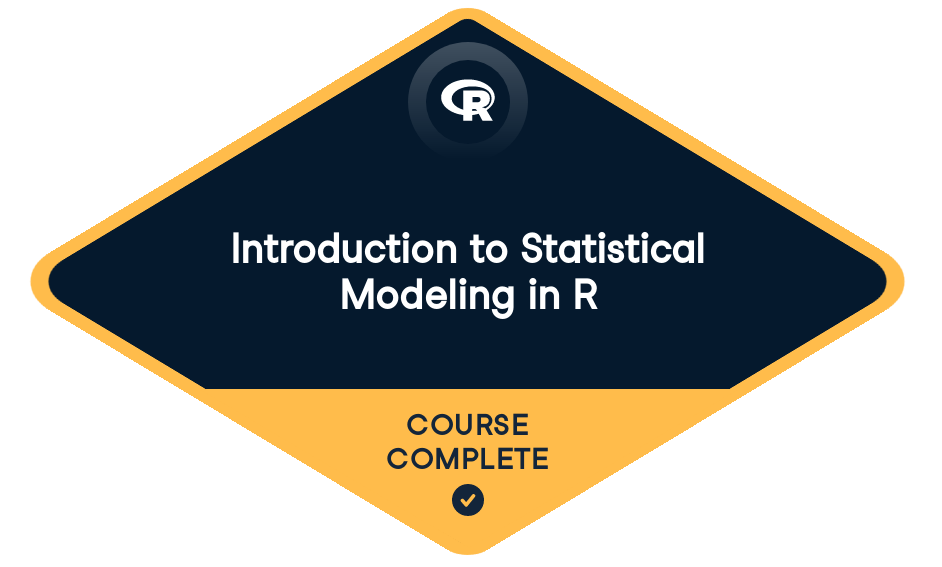Kevin Jolly has completed
Introduction to Statistical Modeling in R
Start course For Free4 hours
3,250 XP

Loved by learners at thousands of companies
Course Description
Introduction Statistical Modeling in R is a multi-part course designed to get you up to speed with the most important and powerful methodologies in statistical modeling in R.
In In this introduction, we'll take a look at what statistical modeling is and what it's used for, R tools for model building, using models for prediction (and using prediction to test models), and how to account for the combined influences of multiple variables.This course has been written from scratch, specifically for DataCamp users. As you'll see, by using computing and concepts from machine learning, we'll be able to leapfrog many of the marginal and esoteric topics encountered in traditional 'regression' courses.
The intermediate course will get you up to speed with the most important and powerful methodologies in statistics.
For Business
Training 2 or more people?
Get your team access to the full DataCamp library, with centralized reporting, assignments, projects and more- 1
What is statistical modeling?
FreeThis chapter explores what a statistical model is, R objects which build models, and the basic R notation, called formulas used for models.
- 2
Designing, training, and evaluating models
In this chapter, you'll start building models: specifying what variables models should relate to one another and training models on the available data. You'll also provide new inputs to models to generate the corresponding outputs.
- 3
Assessing prediction performance
This chapter is about techniques for deciding whether an explanatory variable improves the prediction performance of a model. You'll use cross validation to compare different models.
- 4
Exploring data with models
This chapter is about constructing models to explore masses of data, for instance to generate hypotheses about what factors are important in how a system works. You'll see how the recursive partitioning model architecture, which has an internal logic for selecting explanatory variables, can be used to explore potentially complex relationships among variables. The chapter also covers the evaluation of prediction performance in models where the response variable is categorical, that is, models used for classification.
- 5
Covariates and effect size
Real-world systems are complicated. To faithfully reflect that complexity, models can incorporate multiple explanatory variables. This chapter introduces the notion of covariates and how they allow you to model the effect of an explanatory variable while taking into account the effects of other variables.
For Business
Training 2 or more people?
Get your team access to the full DataCamp library, with centralized reporting, assignments, projects and moreCollaborators


Daniel Kaplan
See MoreDeWitt Wallace Professor at Macalester College
Join over 13 million learners and start Introduction to Statistical Modeling in R today!
Create Your Free Account
or
By continuing, you accept our Terms of Use, our Privacy Policy and that your data is stored in the USA.